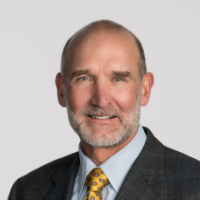
On March 27, 2020, the President signed into law the Coronavirus Aid, Relief, and Economic Security Act (the “CARES Act”). The information published in the CARES Act Resource Center discusses:
- 7(a) Paycheck Protection Program Loans
- 7(b) Economic Injury Disaster Loans and the $10,000 Emergency Grant
- Employer Payroll Tax Delay
- Employee Retention Payroll Tax Credit
- The Telehealth Program
- Main Street Lending Programs
- And more!
If you have questions about your business, its eligibility to participate in any of the loan programs, issues concerning business operations and available financial programs, or related enforcement, please do not hesitate to contact the lawyers at Capes Sokol.
During these uncertain times, you can be certain of Capes Sokol’s commitment to serve you during the COVID-19 Crisis.
Insights
Capes Sokol Practice Areas:
Resources
“Small Business” Loan Types
Historically, the Small Business Administration (the “SBA”) has offered 7(a) Business Loans and 7(b) Disaster Loans. After the passage of the CARES Act on Friday, March 27, 2020, these two loan programs became temporarily amended to provide easier barriers of entry. While FAQs and an Interim Final Rule have been released, there is still much that awaits further clarification. Though on April 16, 2020, funding for the two loan programs had run up, additional funding is expected. As such, it is important to familiarize oneself with the various nuances of the two programs to determine eligibility. Thus far, this is what we know about the two loan programs:ELIGIBILITY →AFFILIATION RULES →TERMS OF THE LOAN →LOAN AMOUNT →LOAN USES →APPLICATION PROCESS →
| 7(A) Paycheck Protection Program | 7(B) Economic Injury Disaster Loan |
|---|---|
If each of the following applies to your business, your business (as a for-profit or as a 501(c)(3)) is eligible:
**Additionally, a business can qualify for the Paycheck Protection Program as a small business concern if it meet both tests in SBA’s “alternative size standard” as of March 27, 2020: (1) maximum tangible net worth of the business is not more than $15 million AND (2) the average net income after Federal income taxes (excluding any carry-over losses) of the business for the two full fiscal years before the date of the application is not more than $5 million | So long as your business has been in operation since January 31, 2020, if one of the following applies to your business, your business is eligible:
|
| 7(A) Paycheck Protection Program | 7(B) Economic Injury Disaster Loan |
|---|---|
| “Payrolls costs” x 2.5 + outstanding amount of 7(b) loan | Based on the business’ actual economic injury and financial needs. In essence, the loan is meant to provide working capital that is necessary to resume normal operations and for expenditures necessary to alleviate the economic injury (but not meant to exceed that which the business could have provided had the injury not occurred). |
| 7(A) Paycheck Protection Program | 7(B) Economic Injury Disaster Loan |
|---|---|
|
|
| 7(A) Paycheck Protection Program | 7(B) Economic Injury Disaster Loan |
|---|---|
| The application process will be through an SBA approved lender. The SBA has released the borrower application here: Paycheck Protection Program Borrower Application Form
No personal guarantee or collateral is required. | A business only needs to fill out the application through the SBA online portal here: COVID-19 Economic Injury Disaster Loan Application
Note, since this loan is administered though the SBA, while the SBA may elect to approve a business purely based on the business’ credit score (without requiring a tax return), it could also require a business to fill out further forms. Personal guarantee may be required for loans in excess $200,000. |
| Operating Phase One | Operating Phase Two | Operating Phase Three |
|---|---|---|
|
|
|
| A court cannot proceed to the next phase until it has completed at least 14 days in each phase. Additionally, the court must reevaluate the Gateway Criteria. | ||
| Order | Date | Summary | Link |
|---|---|---|---|
| Statewide Restrictions on In-Person Proceedings to be Eased as of May 16 | May 4, 2020 | Order Effective May 4, 2020 | |
| Extended Deadlines for Court Reporter Continuing Education | May 1, 2020 | The Supreme Court of Missouri extended deadlines for continuing education for court reports. The reporting year for 2019-2020, which is now the 15 months between July 1, 2019 and September 30, 2020. The reporting deadline will be extended until October 31, 2020. | Order Effective May 1, 2020 |
Main Street Lending Programs
On April 9, 2020, the Federal Reserve, published term sheets for a Main Street Lending Program for small and/or mid-size businesses. There are actually two separate loan programs under the Main Street Lending Program—the Main Street Lending Program and the Main Street Expanded Lending Program. On April 30, 2020, after receiving and reviewing public input, the Federal Reserve made adjustments to the Main Street Lending Program and Main Street Expanded Lending Program and added a third loan option (though the Federal Reserve will only purchase 85% of this loan). The proposed terms of the programs are similar (aside from the loan amount and the collateral required) and are outlined below:ELIGIBILITY REQUIREMENTS →OTHER ELIGIBILITY REQUIREMENTS →TERMS OF THE LOAN →LOAN AMOUNT →CERTIFICATIONS →APPLICATION PROCESS →
| New Lending Program | Priority Lending Program | Expanded Lending Program |
|---|---|---|
| From $250,000 up to the lesser of (i) $35 million or (ii) an amount that, when added to the business’ outstanding and committed, but undrawn debt, does not exceed four times the business’ 2019 EBITDA (earnings before interest, taxes, depreciation, and amortization) | From $250,000 up to the lesser of (i) $50 million or (ii) an amount that, when added to the business’ outstanding and committed, but undrawn debt, does not exceed six times the business’ 2019 EBITDA | From $10 million up to the lesser of (i) $300 million or (ii) 35% of the borrower’s existing outstanding and committed, but undrawn bank debt or (iii) an amount that, when added to the business’ outstanding and committed, but undrawn debt, does not exceed six times the business’ 2019 EBITDA |
| New Lending Program | Priority Lending Program | Expanded Lending Program |
|---|---|---|
CARES Act Section 4003(c)(3)(D) requires borrowers to make the following certifications:
|
||
| New Lending Program | Priority Lending Program | Expanded Lending Program |
|---|---|---|
| Businesses may apply through September 30, 2020 with a start date to be announced soon. | ||
 | Take the AUNT JEMIMA trademark for syrup and pancake mix, which dates to the 19th Century, was formally registered as a U.S. Trademark in 1905, and originally featured a Black woman dressed as a minstrel character. (Website/CBS Austin) |
|---|---|
 | Or the UNCLE BEN’S trademark and logo, first used in commerce back in 1937 and featuring an elderly Black man in a bowtie, apparently based upon the image of a popular waiter in a Chicago restaurant. (Website/NY Daily News) |
 | Or LAND O’ LAKES, the Minnesota-based dairy company whose butter package had, for nearly a century, featured a Native American woman kneeling against a background of green pine trees and a blue lake. (Website/Twin Cities) |
 | Or, of course, the WASHINGTON REDSKINS, a registered trademark for nearly seventy years and a lucrative brand that has generated millions of dollars for the NFL football team in sales of apparel and other merchandise. (Website/Los Fresnos News) |
| Definition | Carefully review the definition of force majeure in that contract. Does it specifically mention pandemics? If not, is there another event expressly identified which incorporates events such as COVID-19 and/or its related repercussions (e.g., “acts of government” or “quarantine restrictions”)? If not, is there general language sufficient to include COVID-19 and/or its related repercussions? |
|---|---|
| Causation | Consider what contractual obligation is not able to be performed and then determine whether the failure to perform this obligation is due to the direct or indirect consequences of COVID-19 as opposed to a different reason. If it is not, the force majeure provision is likely not applicable. |
| Mitigation | Consider whether the party claiming an inability to perform under the contract (i) followed all official guidance; and (ii) took commercially reasonable efforts to perform in a different manner or to otherwise mitigate the effect of the force majeure event. If the party did not take these actions, it may be harder for such party to rely on the force majeure provision. If you are the party claiming an inability to perform, be sure to maintain records of your efforts to prevent or mitigate the impact of COVID-19 on your ability to perform. |
| Notice Requirements | Does the contract contain a notice requirement? If so, consider whether a certain notice must be provided in order to allow reliance on the force majeure provision. You should also be aware of any related timing requirements or requirements related to how/where such notice is delivered. |
| Consequences | Evaluate the consequences of a successful claim for force majeure. For example, does the provision excuse performance or merely allow for a delay in performance equal to the number of days of the force majeure event. Alternatively, some clauses may provide a right to source from an alternate provider or to terminate the contract for non-performance after a certain period of time. |
 (Website/CBS Austin) | Take the AUNT JEMIMA trademark for syrup and pancake mix, which dates to the 19th Century, was formally registered as a U.S. Trademark in 1905, and originally featured a Black woman dressed as a minstrel character. |
|---|---|
 (Website/NY Daily News) | Or the UNCLE BEN’S trademark and logo, first used in commerce back in 1937 and featuring an elderly Black man in a bowtie, apparently based upon the image of a popular waiter in a Chicago restaurant. |
 (Website/Twin Cities) | Or LAND O’ LAKES, the Minnesota-based dairy company whose butter package had, for nearly a century, featured a Native American woman kneeling against a background of green pine trees and a blue lake. |
 (Website/Los Fresnos News) | Or, of course, the WASHINGTON REDSKINS, a registered trademark for nearly seventy years and a lucrative brand that has generated millions of dollars for the NFL football team in sales of apparel and other merchandise. |
Questions?
If you have questions about your business, its eligibility to participate in any of the loan programs, or another issue concerning business operations and available financial programs, please do not hesitate to contact the lawyers at Capes Sokol.




